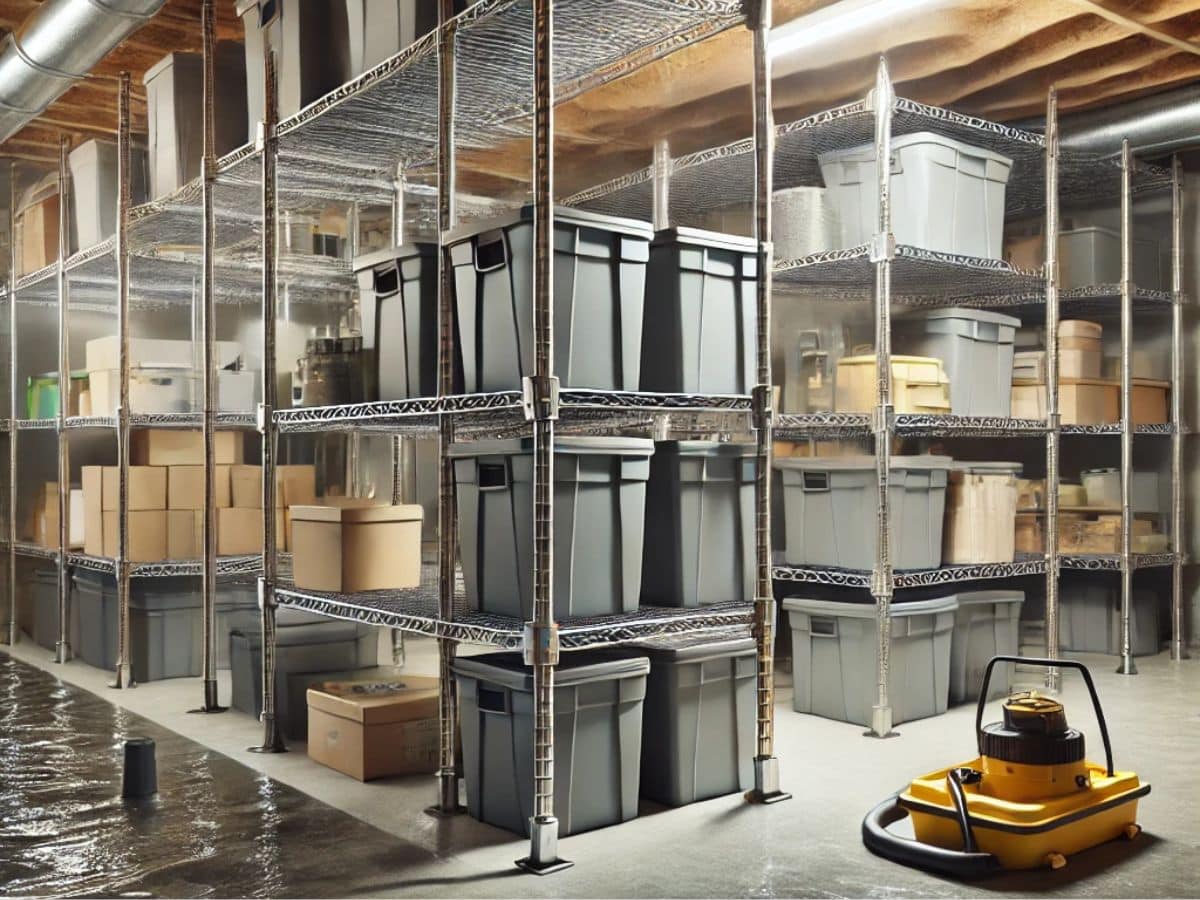
How Basement Storage Supports Prevent Water Damage: A Must-Know Guide
Water damage is a homeowner’s nightmare, often leading to costly repairs and structural issues. One of the most effective ways to protect your property is by implementing basement storage supports to prevent water damage. Whether you live in an area prone to flooding or just want to safeguard your home, this guide will walk you through the importance of proper storage, effective prevention methods, and how to handle water damage should it occur.
Understanding Water Damage and Its Impact
Water damage can result from various factors, including heavy rainfall, plumbing leaks, poor drainage, and even humidity buildup in basements. It can lead to mold growth, foundation issues, and expensive restoration costs if left unchecked. Having basement storage supports to prevent water damage is crucial to mitigating these risks.
When water seeps into a basement, stored items can be affected first. Cardboard boxes, wooden furniture, and electronics can suffer irreparable damage, leading to financial losses. That’s why implementing innovative storage solutions and working with a water damage restoration company can help protect your belongings and maintain the structural integrity of your home.
How Basement Storage Supports Can Prevent Water Damage
1. Elevate Storage Items Off the Floor
Keeping stored items elevated is one of the simplest yet most effective ways to prevent water damage. Using shelves, pallets, or plastic risers helps create a barrier between your belongings and any potential water intrusion.
- Best Materials: Metal or plastic shelves are preferable as they resist moisture and do not warp like wood.
- Pro Tip: Avoid storing items directly on the concrete floor. Instead, use waterproof storage bins or plastic pallets to elevate them.
2. Use Waterproof Storage Containers
Traditional cardboard boxes absorb moisture quickly, making them vulnerable to water damage. Investing in high-quality, airtight plastic storage bins provides an added layer of protection against moisture and potential flooding.
- Why it Works: Plastic containers keep water out and protect items from humidity.
- Ideal for: Seasonal clothing, important documents, and valuable electronics.
3. Install a Basement Drainage System
Proper drainage is crucial in preventing water buildup. Sump pumps and French drains can be highly effective in redirecting water away from your basement, reducing the risk of flooding and dampness.
- Sump Pump Benefits: Automatically pumps water out of the basement when it detects rising water levels.
- French Drain Installation: A long-lasting solution for preventing water from pooling near the foundation.
4. Dehumidifiers and Ventilation
Basements tend to have high humidity levels, which can contribute to mold growth and structural damage over time. Using a dehumidifier and ensuring proper ventilation can keep moisture levels under control.
- Best Practices: Keep humidity levels between 30-50% for optimal protection.
- Air Circulation: Consider installing fans or vents to improve air circulation and reduce dampness.
5. Routine Maintenance and Inspections
Regular maintenance is essential for identifying leaks and potential water damage before they become a significant problem. Water damage companies recommend routinely inspecting basement walls, pipes, and storage systems.
- What to Check: Cracks in walls, leaking pipes, clogged gutters, and foundation issues.
- When to Inspect: Before and after heavy rainfalls or at least twice a year.
What to Do if Water Damage Occurs
Despite taking preventive measures, water damage can still happen. If you experience basement flooding, acting quickly is essential to minimize damage and begin the water damage restoration process.
1. Contact a Professional Water Damage Restoration Company
A water damage restoration company can assess the severity of the damage and provide immediate solutions to prevent further issues. If you’re in Florida, consider Classic Restoration for professional water damage restoration in St. Petersburg.
- Why Choose Experts?
- Quick response time
- Advanced equipment for water extraction
- Mold prevention and structural drying
2. Remove Water and Dry the Area
Using sump pumps, wet vacuums, and fans, begin extracting water as soon as possible. Drying out the area within 24-48 hours helps prevent mold and further structural damage.
- Effective Drying Techniques:
- Use industrial-grade dehumidifiers
- Open windows to increase airflow
- Remove wet items and dry them separately
3. Disinfect and Prevent Mold Growth
After removing standing water, thoroughly disinfect affected areas using mold-resistant solutions. Mold can develop within 24 hours, so taking immediate action is crucial.
- Best Mold Prevention Tips:
- Use antimicrobial treatments
- Dispose of items that cannot be salvaged
- Seal basement cracks to prevent future leaks
Water Damage Restoration in St. Petersburg
For residents in Florida, basement flooding and humidity-related water damage are common concerns. If you experience basement water damage, working with a water damage restoration company like Classic Restoration ensures a professional and efficient recovery process.
Why Choose Classic Restoration?
- 24/7 Emergency Response
- Certified Water Damage Experts
- Advanced Drying & Dehumidification Techniques
- Comprehensive Damage Assessment & Repair
Final Thoughts
Preventing basement water damage starts with basement storage supports to prevent water damage and proper home maintenance. You can significantly reduce the risk of costly water damage by implementing innovative storage solutions, investing in drainage systems, and staying vigilant with inspections.
However, if water damage does occur, seeking professional water damage restoration in St. Petersburg is the best way to restore your home quickly and efficiently. Don’t wait for small leaks to become major problems—protect your home today!
Call Us: (727) 400-4720
Rebuild your property after damages from either water, fire, molds, or other biohazards.
- Pinellas County:
- Palm Harbor
- Dunedin
- Tarpon Springs
- New Port Richey
- Clearwater
- Port Richey
- Holiday
- Odessa
- Oldsmar
- Hudson
- Bay Pines
- Belleair Beach
- Belleair Shore
- East Lake
- Gulfport
- Indian Rocks Beach
- Indian Shores
- Kenneth City
- Largo
- Safety Harbor
- Petersburg
- St. Petersburg Beach
- Tierra Verde
- Treasure Island
- Other Tampa Bay communities
